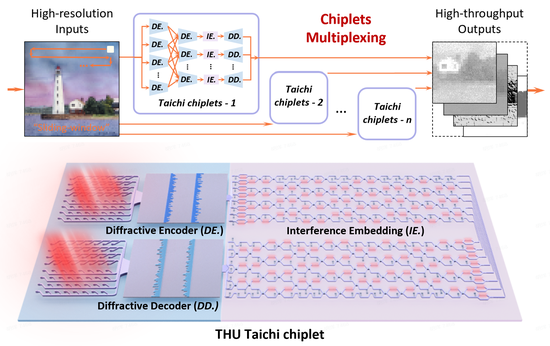Chinese research team develops large-scale photonic chiplet Taichi on artificial general intelligence
(ECNS) -- A research team from Tsinghua University made an innovation of photonic AI chiplet “Taichi” that is capable of empowering 160 TOPS/W artificial general intelligence. The research has been published on Science.
The rapid development in artificial general intelligence (AGI) imposes stringent energy efficiency and area efficiency requirements on next-generation computing.
As a brand-new technology to break the plateauing of Moore’s Law, integrated photonic neural networks have shown great potential in achieving superior processing speed and high energy efficiency.
However, it suffers severely limited computing capability and scalability that only simple tasks and shallow models were experimentally realized in photonic integrated circuits, hardly supporting modern AGIs.
The research team, led by Fang Lu, associate Professor from Department of Electronic Engineering, and Professor Dai Qionghai from Department of Automation, innovated Taichi along with a distributed optical computing architecture, owning billions-of-neuron on-chip computing capability with 160-TOPS/W energy efficiency.
Taichi not only exploits the high parallelism and high connectivity of wave optics to implement computing with very high computing density, but also explores a general and iterative encoding-embedding-decoding photonic computing to effectively increase the scale of the optical neural network to billion neuron level.
For the first time, Taichi experimentally realizes on-chip large optical neural networks for thousand-category-level classification and artificial intelligence-generated content (AIGC) tasks, with up to 2-3 orders of magnitude improvement in area efficiency and energy efficiency compared to current AI chips.

